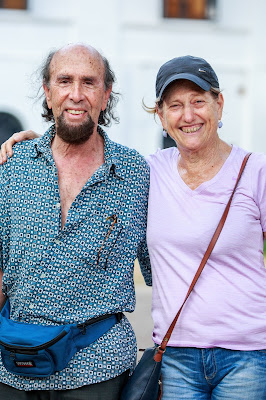In
his book, Radhakrishnan Panicker delves on spirituality and science
Illustration by Amit Bandre
By
Shevlin Sebastian
Three-year-old
Swarnalatha Mishra was travelling in a vehicle with her father in
Madhya Pradesh. About 180 kms from her home, in a town called Katni,
she asked the driver to go down another road towards her 'home'.
Her
father was puzzled. She then described the house: it was white in
colour and had black doors. There were four rooms on the ground
floor. There was a railway line in front and a girl's school at the
back. The family also owned a motor car.
And
they stopped at a house in the exact description given by
Swarnalatha. When Prof. HN Banerjee, the head of parapsychology at
the University of Rajasthan, came to know about this, he interviewed
Swarnalatha and confirmed all what she said.
Swarnalatha
said that she was Biya Pathak in her previous life. This was
confirmed by the family members who said that Biya had died in 1939,
leaving behind a husband, Chintamini Pandey, and two sons.
Later,
when Chintamini met Swarnalatha, in 1948, she accurately told him
many details of their married life including an amount of Rs 1200
that she put in a small box, which was taken away by Chintamini.
This
anecdote has been recounted in the book, 'Convergence – Ultra
Science and Vedic Spirituality' written by Radhakrishnan Panicker, a
Kochi-based retired teacher who has worked in India, Africa, USA and
UK.
“I
had studied 20 cases of soul reincarnation,” says Radhakrishnan.
“Reincarnation is a fact of human existence. Suppose, I am a
murderer. When I reincarnate I might come back as a victim. This is
how karmic effects are neutralised.”
Radhakrishnan
has covered a wide range on the subject of science and spirituality
in his 282 page book, published by Notion Press. These include the
superstring theory, primordial vibrations, electronic voice
phenomena, consciousness, yoga sutra, and the quantum theory.
Asked
about the existence of God, he says, “There is a God field. It is a
power beyond the ordinary. It encompasses the whole existence. To
realise God you have to reach that field. But your brain has got
adapted to the visible world. So, it is not easy. That is why
spiritual masters recommend meditation, yoga and mantras in order to
access the internal energy field.” ”
There
are all types of energies. “There is the energy in the visible
world – atoms, photons, graviton, electrons, the earth, galaxies,
solar system and the universe,” says Radhakrishnan. “There is
also an existence beyond the visible world. As for what it is, the
answer comes from the Vedas. It is satchidanandan or the universal
consciousness.”
One
of the subjects Radhakrishnan explores is Extra Sensory Perception
(ESP). “Ingo Swann, an American medium, was told to visualise
Russian military installations, through ESP, because the spy
satellites could not get any photographs,” says Radhakrishnan.
“Ingo concentrated and drew what he saw. Later, it turned out to be
accurate. The American government released a report in 1995 stating
that a man can leave his body provided that there is enough energy to
do so. Through my research I realized that this energy is divine.”
Ingo
wrote a book, called 'Kiss The Earth Goodbye', in which he asserted
that a man can leave the earth through an out-of-body experience.
“Like reincarnation, ESP is also an undeniable fact of human
existence,” says Radhakrishnan.
Asked
about his final conclusions, Radhakrishnan says, “We are immortal,
in the sense that we willcontinue to exist long after we die. There
is an immortal energy field within all of us.”
(The
New Indian Express, Kochi and Thiruvananthapuram)





















